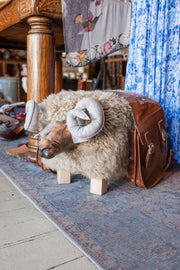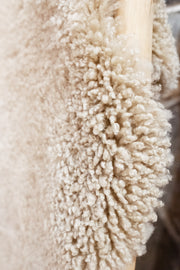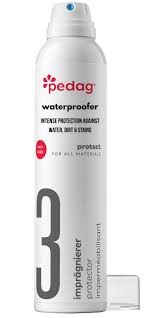Have you ever wondered why leather and fur have been used for centuries to keep people warm in extreme climates? While modern synthetic materials claim to provide warmth, nature has already perfected the science of insulation.
At Fur Traders, we believe in the power of natural materials to provide warmth, comfort, and protection without sacrificing breathability. Let’s break down the science behind how leather and fur keep you warm better than any synthetic alternative.
1. The Natural Insulation of Fur: Trapping Heat Efficiently
Fur is nature’s original thermal insulation system, perfected over millions of years to protect animals from extreme cold.
How Fur Keeps You Warm:
- Air pockets between fur fibers trap body heat, creating an insulating layer that holds warmth close to the skin.
- Multi-layered structure allows fur to maintain warmth while remaining breathable, preventing overheating.
- Guard hairs repel moisture, keeping the underfur dry and effective as an insulator.
This natural technology explains why Arctic animals thrive in sub-zero temperatures—and why fur coats remain unmatched in keeping people warm.
2. Leather’s Unique Ability to Retain Heat
Leather isn’t just about durability—it’s also an excellent wind and cold barrier.
Why Leather Works in Cold Weather:
- Dense fiber structure prevents heat loss, acting as a second skin.
- Wind-resistant properties block cold air, reducing heat loss compared to fabric alternatives.
- Water-repellent surface ensures warmth by keeping moisture out.
A lined leather jacket combines the best of both worlds: leather’s protection and fur’s insulation.
3. Why Natural Materials Beat Synthetics in Temperature Regulation
Synthetic insulation materials—like polyester fleece and acrylic fur—attempt to mimic nature, but they fall short in key areas.
| Feature | Natural Fur & Leather | Synthetic Materials |
|---|---|---|
| Insulation | Naturally traps heat | Requires thick layers for warmth |
| Breathability | Regulates temperature, prevents overheating | Traps moisture, leading to sweat buildup |
| Longevity | Lasts for decades | Breaks down over time |
| Water Resistance | Naturally repels light moisture | Absorbs water, loses warmth |
Unlike synthetic alternatives, leather and fur adapt to changing temperatures, making them comfortable in both cold and mild weather.
4. The Science of Comfort: Why Leather and Fur “Feel” Warmer
Beyond scientific insulation, there’s a reason leather and fur feel warmer the moment you put them on—thermal conductivity.
- Leather warms up quickly as it absorbs and retains body heat.
- Fur distributes heat evenly, preventing cold spots.
- Unlike synthetic fabrics, which can feel cold before warming up, leather and fur naturally match your body temperature faster.
The result? Instant comfort in cold weather.
5. Year-Round Versatility: How Leather and Fur Adapt to Different Climates
One of the biggest advantages of leather and fur is their ability to regulate temperature across seasons.
- Winter: Thick fur and leather provide maximum insulation against the cold.
- Spring & Fall: Lightweight leather jackets and fur-trimmed accessories keep you comfortable in fluctuating temperatures.
- Summer: Breathable, soft leather stays cooler than synthetic alternatives, making it ideal for mild evenings.
This natural adaptability eliminates the need for excessive layering, keeping your wardrobe both practical and stylish.
Conclusion
The science is clear—leather and fur are nature’s best insulators. Unlike synthetics, these materials provide superior warmth, breathability, and long-term durability in any climate.
If you’re looking for a smarter way to stay warm, explore Fur Traders’ premium collection and experience the unmatched comfort of nature’s original insulation technology.














